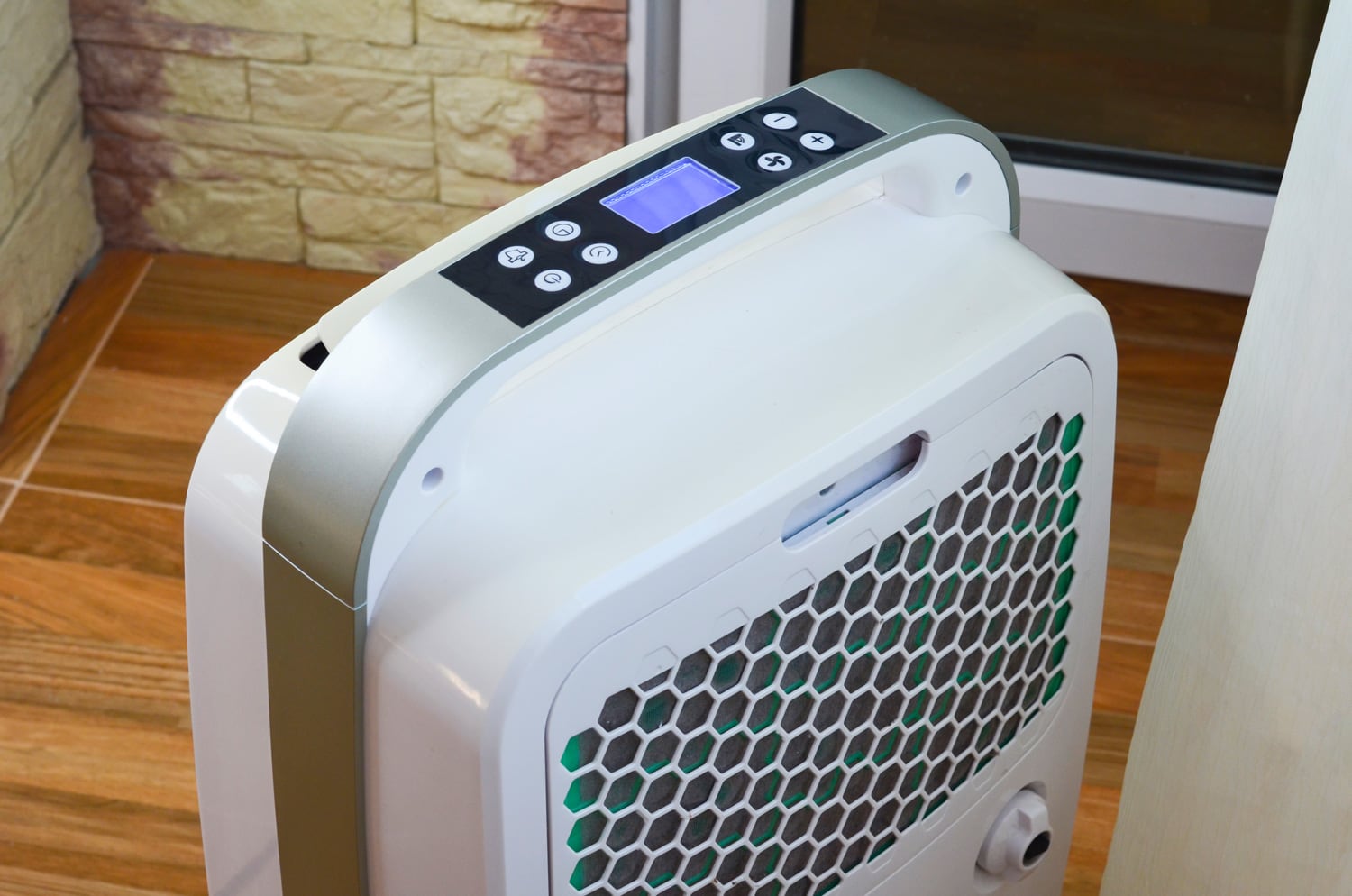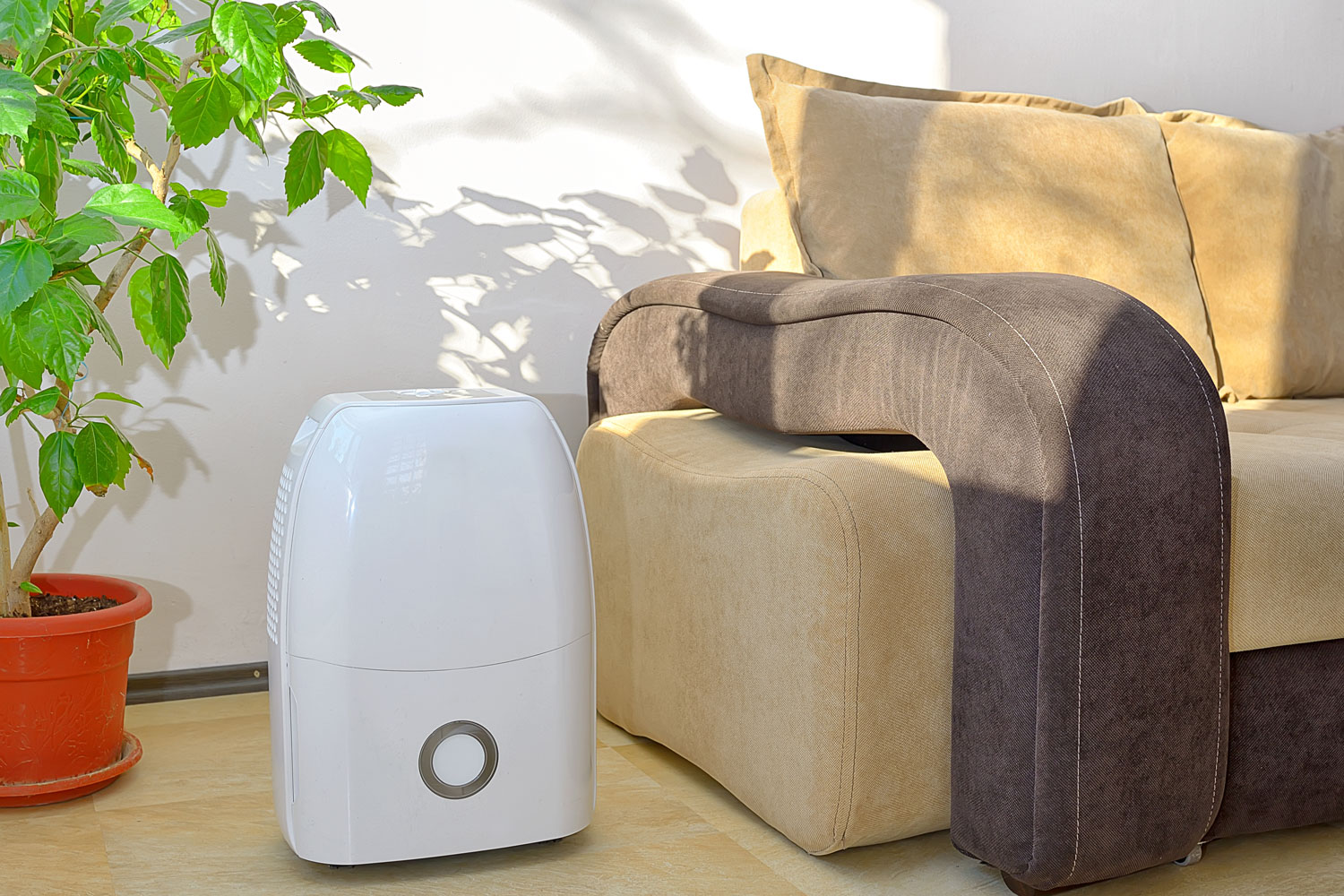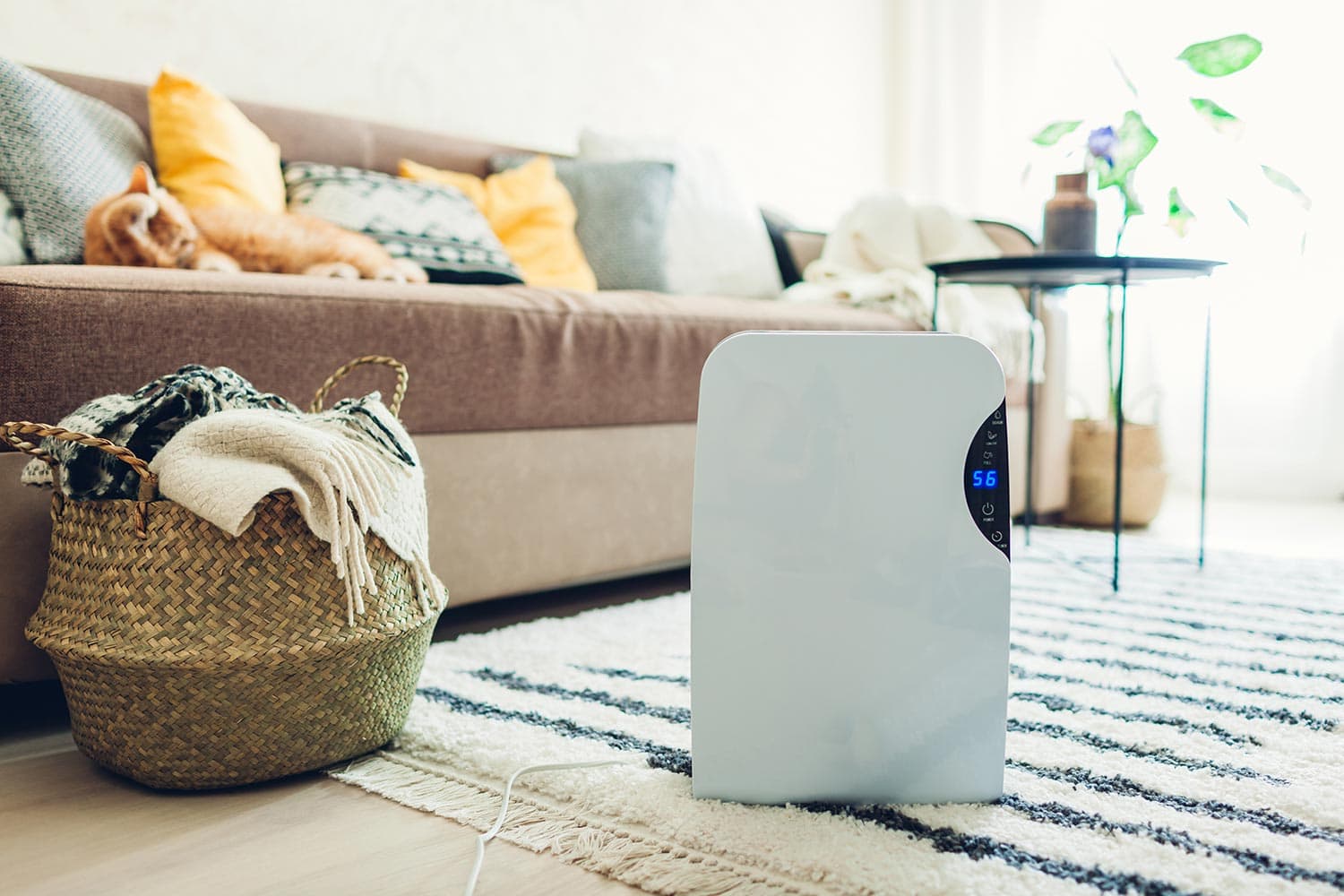Poor air quality is common in basements, mainly because of high humidity levels. A dehumidifier can help, but might be challenging to set up. Your dehumidifier cannot make a difference if you're unsure about the settings. So, how do you find the right one? We've looked up these questions and have some great answers for you.
The ideal setting for a dehumidifier in the basement is between 30% to 50%. Mold can develop when humidity levels rise to 60% or higher, so it's best to keep the percentage low. Some sources suggest a setting of 45%, but the numbers will vary depending on your preference or needs.
It's crucial to find a good balance between the settings and speed when running a dehumidifier. That way, it can effectively regulate moisture levels under varying conditions. Keep reading to learn the best setting for different seasons and other ways to get the most out of your dehumidifier!

What Temperature Should I Set My Dehumidifier At?
Energy Star suggests keeping humidity levels between 30% to 50% to prevent bacteria growth, which usually starts when humidity rises above percentage. So, experts recommend setting your device within this range.

Most dehumidifiers will come with a built-in device, called a humidistat, that lets you set it at your desired humidity level. If your humidifier doesn't have one, keep the operating temperature above 60 degrees Fahrenheit. The ideal setting is between 70 to 90 degrees Fahrenheit.
When Should I Run My Basement Dehumidifier?

It's necessary to run a dehumidifier when relative humidity is above 60%, regardless of the season. But sometimes, humidity may lower even without dehumidification because of dry air.
A good example is during winter, when the air becomes cool and dry compared to other seasons. There's no harm in stowing away your dehumidifier during this period since the humidity level usually reduces by itself.
It's best to evaluate your basement's relative humidity to determine whether you should run your dehumidifier.
Since basement humidity level changes with the season, you might have to make a few adjustments during different weather conditions. Below are setting recommendations for the summer and winter time.
Basement Dehumidifier Settings For Summer
Moisture levels increase the most during hotter seasons, encouraging the growth of mold and mildew even more in basements. Setting your dehumidifier to 50% or lower is optimal for reducing moisture in the room.
If your basement has windows, consider keeping them closed to maximize your device's efficiency. To protect your windows from condensation, consider setting your dehumidifier between 30% to 40%.
Basement Dehumidifier Settings For Winter
You rarely have to run your dehumidifier in the winter because the air is drier during this season. However, maintaining humidity levels in your basement is still crucial even then.
If it's necessary to run your dehumidifier, keep the setting at 30% to 50%.
Take note, avoid operating your dehumidifier when outside temperatures are below 60 degrees Fahrenheit during cold weather. It can damage your device because of condensation and freezing on your unit's cooling coils.
It's also best not to overuse them during the winter to prevent them from excessively decreasing humidity levels.
How To Set Up Your Dehumidifier

It's not complicated operating your dehumidifier. Most units come with automatic functions for easier use. All you have to do is know the proper settings!
Here is a brief step-by-step guide on how to set your dehumidifier:
1. Choose Its Location
Finding the right location to place your dehumidifier affects its effectiveness. We stress selecting a unit designed specifically for the room you will use it in. That way, it's optimized to function effectively in the location, despite where you place it.
2. Pick A Moisture Draining Method
You can drain your dehumidifiers in three different ways: manual, gravity draining, and condensate pumping.
Manual draining requires no additional setup. Simply empty the bucket once it fills up and put it back in its place.
With gravity draining, you will need to attach a hose to the back of your dehumidifier. From there, the collected moisture will release into a floor drain.
To know more about this draining method, read this post: How To Drain Dehumidifier With A Hose
Last, you can drain through an internal condensate pump, usually with selected models. It works similar to gravity draining, where moisture gets collected and pushed into a different location. If your dehumidifier doesn't come with the pump, you can buy an external pump instead.
3. Set Its Humidity Level
Dehumidifiers usually come with a humidistat, which automatically maintains humidity at your chosen level. Use the electric control panel to adjust it according to your preference. But keep in mind, the recommended setting is between 30% to 50%.
4. Maintain Your Unit
Once you start operating your dehumidifier, keep an eye on it! Monitor the relative humidity in the room to ensure it stays within the recommended level. Also, clean the air filter a few times a month, and apply other maintenance required for your unit.
Where Should I Place My Dehumidifier?

The best spot to put your dehumidifier is somewhere with enough room for air to circulate to and from the unit. Also, it should be in the location that experiences the highest moisture collection.
Another consideration is where the air comes out from the device. It ensures the air flows out freely and keeps it from getting blocked off. Most models would release the air through a vent on top of the unit, while others would have these on their sides.
A few places where dehumidifiers commonly go are basements, crawlspaces, bathrooms, and kitchens. Some homeowners would also put them by open doorways or hallways to make it work for multiple spaces.
Read this post for more insight on where to put dehumidifiers: Where To Place A Dehumidifier (5 Suggestions)
Why Is It Important To Dehumidify My Basement?
Condensation in a basement comes from water vapor that goes through the foundation, causing the space to be prone to moisture collection and increasing humidity levels. Dehumidifying your basement is one way to control these, making your basement feel more like a livable space.
Lowering the humidity reduces the chances of dampness and odor. Hence, preventing mold growth and improving air quality.
Experts advise monitoring basement humidity regularly to be sure your dehumidifier is at the appropriate setting and maintains proper levels.
If you want to know more about dehumidifiers in basements, read this post: Do You Need a Dehumidifier in the Basement?
Although dehumidifiers specifically aim to reduce the relative humidity in a space, they also protect you and your home from harm caused by bacteria on surfaces and in the air.
Dehumidifiers can help with a few allergens, including mold and dust mites. That way, homeowners with sensitive airways or allergies won't be overly exposed to these potential triggers.
Do I Need A Dehumidifier?
Admittedly, a dehumidifier will make several improvements to your home, but it won't always be essential. If you're debating whether you need to purchase one for your space, here are a couple of signs that point to "yes":
Undesired Mold Formation
A damp environment is all mold and mildew need to spread, which is why basements are an ideal location for them. If you find them growing on the walls, floors, or moist parts of your home, this is a strong indicator of high humidity levels.
Musty Smells
One of the most noticeable changes in a room with increasing humidity is an unpleasant odor. This problem usually develops because of bacteria, mold or mildew, and poor airflow.
Warm, Uncomfortable Conditions
Combining a damp room and poor air circulation creates an uncomfortable warmth spreading throughout the air. Consequently, it makes your space unbearable and almost unlivable.
Frequent Condensation
Foundation walls and floors tend to be cold, allowing it to develop condensation when it comes into contact with warm air. If you notice this problem occurs frequently, such as on your windows, consider checking the humidity in the area.
Structural Damages
High humidity levels can damage your home's structure, especially your flooring. When wood absorbs moisture, it may expand and warp. And so, it may cause uneven floorboards or ruined baseboards.
In Closing
Maintaining the moisture levels in your home, especially your basement, keeps it a comfortable space. Dehumidifiers control humidity by reducing or sustaining it once put in the right setting.
Professionals recommend humidity levels to stay at 30% to 50%. It's important to keep it within this range during hotter weather, such as the summer. But, you won't always need to run it when it's colder, like during winter.
